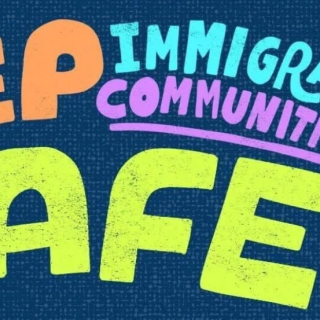Advertisement
The story of how medical marijuana helped one man's virus symptoms and how Michigan is whupping Ohio
From December 2019 to mid-February of 2020, he was a long hauler. It’s just the flu, he told his concerned family. Anyway, he had to keep working at his warehouse job at Rickenbacker.
Luckily he had health care, this fan of the Free Press told us. But two rounds of antibiotics didn’t help. Five to ten days of illness, a few days of what seemed like a recovery, but over and over it crept back. The coughing, the body aches, the constant sweating, the stomach issues refused to cease.
He remembers how his doctor wasn’t sure if it was the flu or possibly that new virus emerging on the other side of the world. The doctor shook her head, asking again, “Have you left the country?”
“I can’t afford a trip overseas,” the former long-hauler told us.
Finally, our unnamed source was fully back to feeling normal. It was the end of February 2020, suffering through three months of a COVID-19 infection.
Those days were a blur, says the source. But he does remember this –there was only one medicine that helped the symptoms. A natural remedy. In some ways like a mask. So simple, so effective.
The medicine: a homemade marijuana edible, a chocolate brownie to be exact.
“I was still sick, but the brownie eased the aches and chilled me out. Much better than the over-the-counter crap at Kroger,” said our source who suffers from chronic knee and lower-back pain due to the constant vibration from driving a forklift eight or more hours a day.
Not unexpected, say medicinal advocates, is how THC and CBD have both shown promising results in the battle against COVID-19. They lessen the “cytokine storm,” or the immune system’s overreaction to the virus, this according to the University of South Carolina.
Our source finally decided earlier this year to get his Ohio Medical Marijuana Card, or MMJ card. He had been driving to Michigan, where recreational marijuana has been fully legally since December 2019. However, if caught in Ohio with some Dab purchased in Michigan, it is a felony.
After a Zoom meeting with the Ohio Cannabis Connection’s Dr. Kendra Hill of Columbus, who earned her M.D. at Case Western Reserve University Medical School, he was soon approved.
Getting his card was not as stressful as getting the vaccination, which he did earlier this month while driving through the Ohio Fairgrounds, his own pictures of the experience are above. A Columbus firefighter leaned into his car window and stuck a needle in his arm. He was told to wait in the parking lot in case of a bad reaction. An event he witnessed (pictured above).
Our source’s vaccination voodoo would come later that night though. He felt a fever begin to come on, giving him a PTSD-like “Rona” flashback.
But after a small spoonful of Grow Ohio’s “Butterfly Effect” honey (pictured above), grown and made at its state-of-the-art facility in Zanesville, he was able to relax and sleep with ease. Others who had the vaccination blues are telling a similar story.
Ohio’s medical marijuana prices are too high, said a majority of MMJ cardholders in a recent Ohio State-led study. But our source says his biggest relief is his purchase was perfectly legal and protected by HIPAA privacy laws.
“I use and I vote,” said our source. “I’m raising three kids. I have a mortgage. To not have to fear the po (police) pulling me over, tricking me into searching my shit, I can’t tell ya what a relief that is.”
At the Statehouse, prudent Republicans continue to scoff at full legalization. One repercussion is being thoroughly outplayed by Michigan.
The state up North is poised to become the next California. Its medical market now ranked #2 in the nation, and its recreational market projected to top $1 billion in sales annually within several years. California since January 2018 has collected $1 billion in tax revenue from recreational sales alone.
In Ohio, the pandemic derailed the signature drive to put “The Regulate Marijuana Like Alcohol Amendment” on the November 2020 ballot. Advocates are now eyeing November 2022.
Full legalization remains elusive for Ohioans, costing the state hundreds-of-millions in tax revenue that could be used to finance, for example, community policing initiatives such as hiring more social workers.
The Tax Foundation, the nation’s leading independent tax policy nonprofit, predicts Ohio will lose $220 million in excise tax revenue by 2024 if the state remains strictly medicinal. That figure does not include sales tax, which the state would also charge.
“I have estimated the consumption of cannabis products by medical consumers probably amounts to less than 10 percent of the total consumption in Ohio,” says Rob Ryan, executive director for the medical marijuana advocacy group Ohio Patient Network. “We are talking about 90 percent in taxable sales, a very big boost to the state’s revenue.”
Michigan marijuana consumers pay a 10-percent excise tax and 6-percent sales tax. Their money going to medical marijuana research, the state’s School Aid Find and the Michigan Transportation Fund.
At least Ohio has a medicinal program. According to the state, as of February 2021 there are nearly 180,000 registered users, 12,000 of those are veterans and 900 others are dealing with a terminal diagnosis.
What many ultra-conservative Ohioans fail to take into consideration is that medical marijuana could become a huge ally in the fight against the opioid and heroin epidemic. Michigan state officials have found medical cannabis was associated with a 64 percent decrease in opioid abuse with patients.
Of course, these same critics of full Ohio legalization claim marijuana increases crime, diminishes traffic safety, harms public health and lowers teen educational achievement.
But the CATO Institute begs to differ. In its study, “The Effect of State Marijuana Legalizations: 2021 Update,” the Institute stated: “The absence of significant adverse consequences is especially striking given the sometimes dire predictions made by legalization opponents.”



